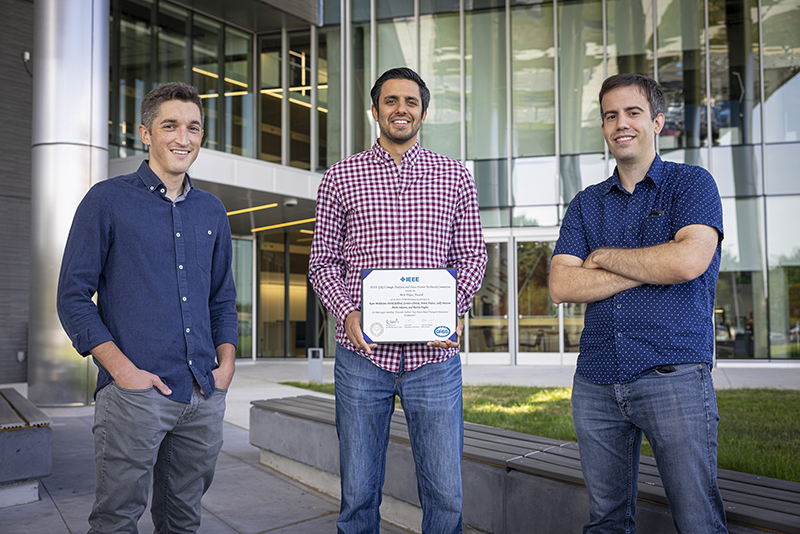Press Release
Johns Hopkins APL Scientists Contribute Award-Winning Breakthrough to AI-Driven Climate Initiative
Scientists from the Johns Hopkins Applied Physics Laboratory (APL) in Laurel, Maryland, have made significant progress toward creating the first worldwide, near-real-time inventory of road transportation emissions, contributing a major piece to a larger effort to monitor greenhouse gas emissions on a global scale, known as Climate TRACE.
Climate TRACE, from “Tracking Real-time Atmospheric Carbon Emissions,” is a global initiative to build a tool that will provide a public, independent measure of human-caused greenhouse gas emissions using artificial intelligence (AI), satellite image processing, machine learning and other remote sensing technologies. Climate TRACE will rely primarily on existing infrastructure — satellites, but also mobility data, drones and land- and sea-based sensors. The tool counts former vice president Al Gore among its chief funders and supporters, and it was honored as one of the top 100 inventions of 2020 by Time magazine.
An APL team has demonstrated for the first time that road-transport emissions can be accurately estimated from satellite imagery. In conjunction with other data sources, including road network data, population data and satellite- and ground-based data on carbon dioxide concentrations, the team was able to use satellite imagery to train and validate machine-learning models that can be used to make accurate predictions where direct measurements are not available.
Data from APL’s models are incorporated into the first public Climate TRACE inventory and dashboard, which launched this week. The team’s initial proof-of-concept results were presented at the Institute of Electrical and Electronics Engineers (IEEE) Computer Vision and Pattern Recognition 2021 Conference and published in the conference’s proceedings, earning the award for Best Paper in the EarthVision Workshop track.
“Our results have been encouraging, especially considering that the work that we’re doing wasn’t even possible a few years ago,” said Ryan Mukherjee, the technical lead on APL’s work with Climate TRACE. “It’s only recently that we have the data support and the computational libraries necessary to create and train these kinds of models.”
The Lab’s contribution grew out of a submission to an internal challenge in 2020. Sponsored by the Research and Exploratory Development Mission Area, the challenge sought solutions to combat climate change and promote environmental resilience with technology and techniques that had been developed in other applications across the Lab. It was coordinated by Marisa Hughes, who is also coordinating APL’s ongoing collaboration with Climate TRACE.
Mukherjee submitted a proposal to apply machine learning and remote sensing data to the problem of estimating greenhouse gas emissions. In the process of developing the idea, he discovered Climate TRACE, and the collaboration was born. Since then, APL has worked closely with Climate TRACE, and Hughes and Mukherjee have met regularly with representatives of the coalition, including Gore. The team faced a major challenge, coming onboard a year into the Climate TRACE project and tasked with creating a brand-new capability with seedling funding.
“When we met with the Climate TRACE team initially, we learned that they had great data coverage of a lot of different areas, but they hadn’t been able to find a partner to work on road transport emissions,” Hughes said. “There isn’t a lot of ground-based data globally, and it’s very hard to see that kind of activity using satellites, especially satellites with meaningful global coverage, so we saw that as an area where the Laboratory could make a real impact.”
The team is now in the process of validating its models and iterating them into products that can be used by Climate TRACE, continuing to improve global emissions estimates and incorporating population and infrastructure data to drive down error.
“There are still challenges ahead to reduce bias and the type of unforeseen errors that can emerge from machine-learning models,” Mukherjee said. “But that’s par for the course with this type of work.”
The award-winning paper’s authors include Mukherjee and Hughes, as well as Derek Rollend, Gordon Christie, Anshu Saksena, Sally Matson and former APL staff member Armin Hadzic.
